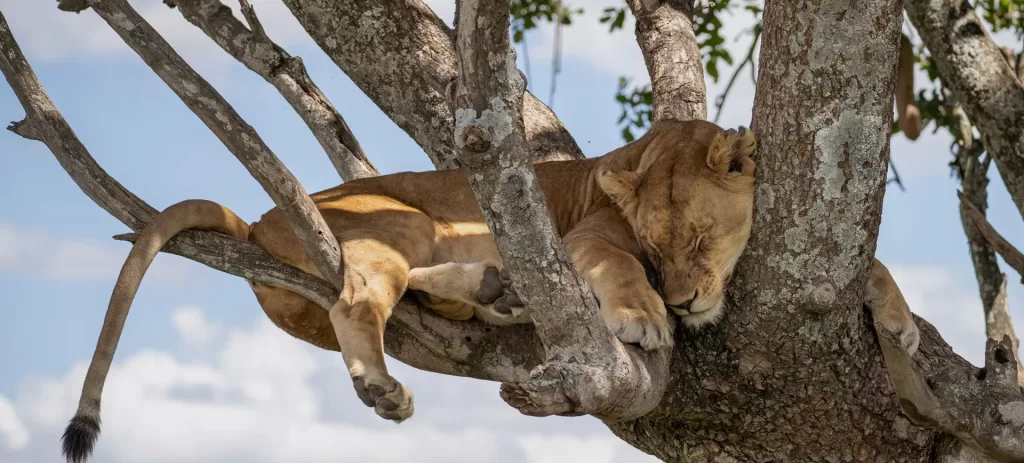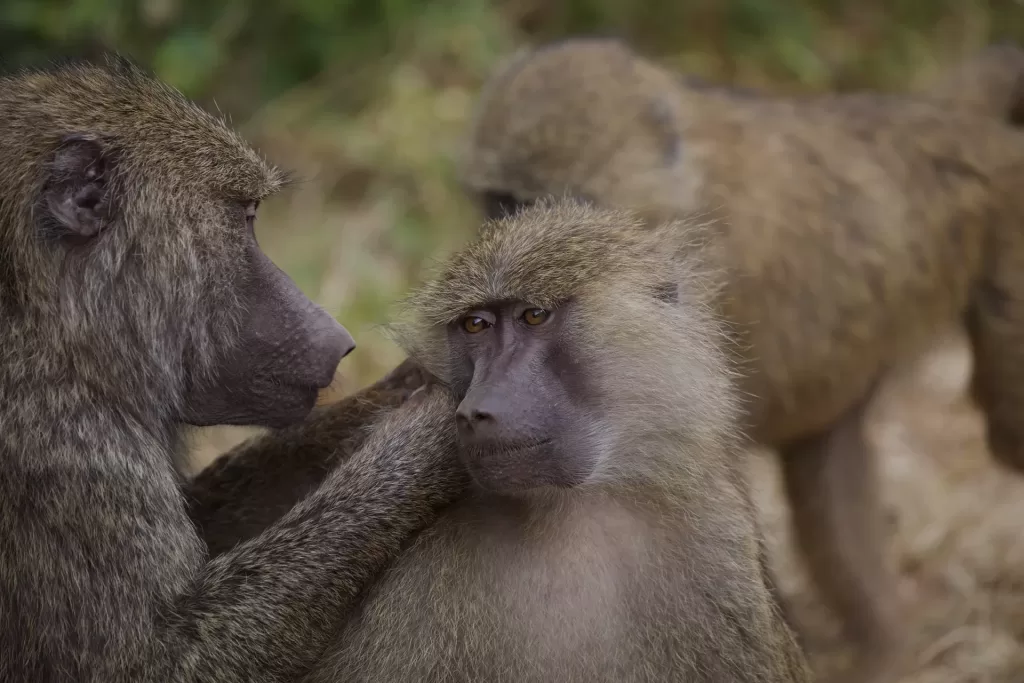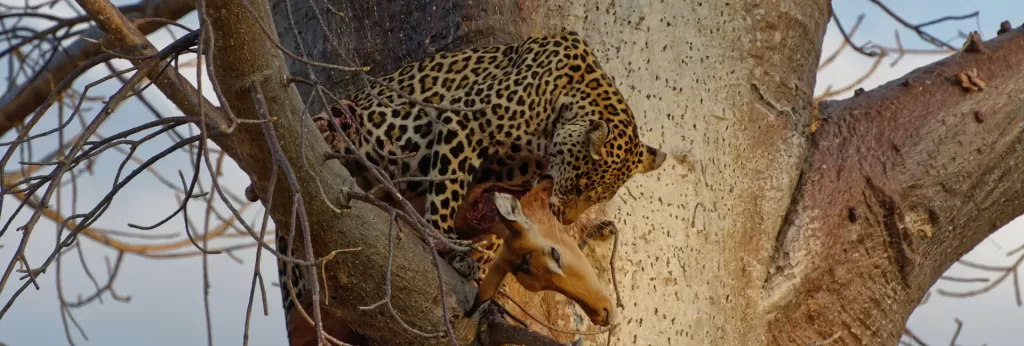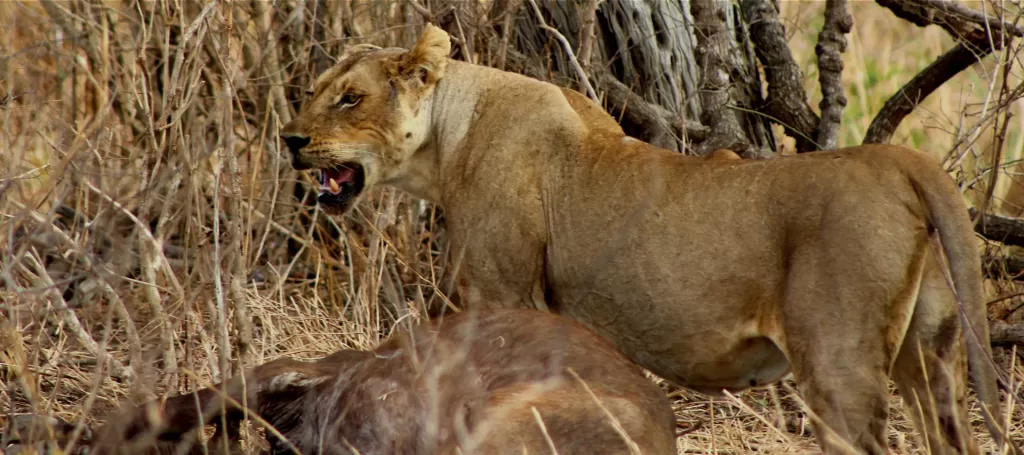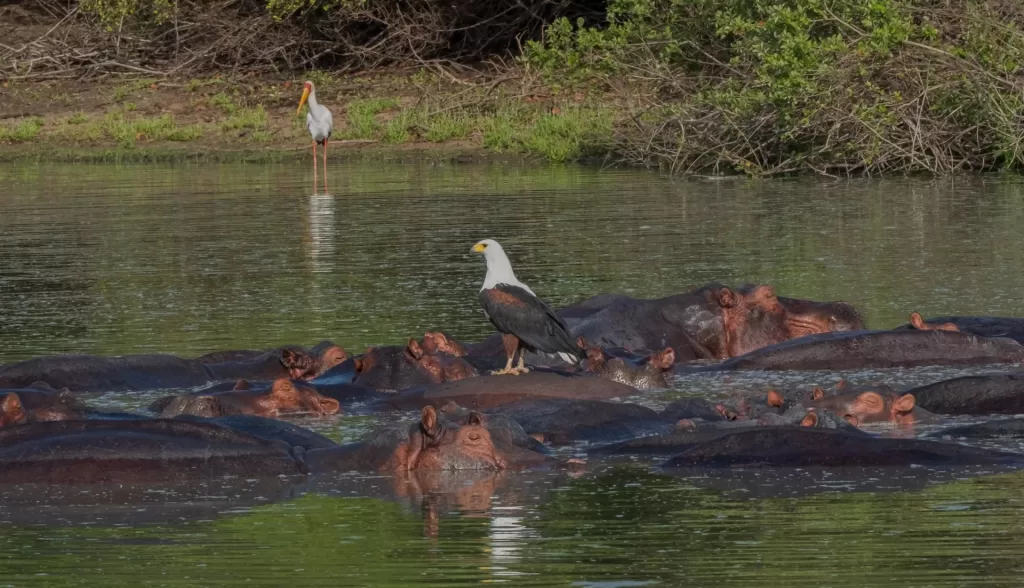Ngorongoro Conservation Area
Home » Tanzania Safari Experiences »Ngorongoro Conservation Area – The Largest Caldera in the World
The Ngorongoro Conservation Area is named one of the Seven Natural Wonders of Africa. It is located 190km west of Arusha between Lake Manyara and the Serengeti and covers 8292 sq km. The conservation area comprises the 3 main areas as below.
The Ngorongoro Crater is 19km wide and is the largest caldera in the World. It offers a classic Big 5 safari experience in the unique setting of an ancient volcanic caldera. It is home to some 30 000 animals, and the crater’s surprisingly diverse habitats include highland plains, acacia woodland, swamps, savanna, savanna woodlands, and forests.
Olduvai Gorge which is known as ‘the cradle for humankind’’ is 30 miles long and 300 feet deep and forms part of the Great Rift Valley. There is a small museum with informative audio and visual exhibits about the discoveries made in the region by the famous archaeologists Mary and Louis Leakey.
Ndutu the southeastern part of the Serengeti plains acts as a habitat for migratory animals where vast herds gather for more than four months, from December to April.
The Ndutu area acts as calving grounds for wildebeest and other migratory animals before they cross over to Serengeti Plains.
Things to do in Ngorongoro Crater and Conservation Area.
Incredible wildlife viewing all year round – Big 5 sightings
The crater is an enormous, unbroken caldera that now overflows with wildlife. This wildlife includes the Big Five (lions, elephants, black rhinos, leopards, and buffaloes).
The crater wall rises 600 m, once you reach the crater floor, you start to spot the various animals. Thereafter you will explore the various sections of the crater, which include Lake Magadi and Lerai Forest.
Experience the Calving Season of the Great Wildebeest Migration
The calving season of the Great Migration usually takes place between January and February of each year. A calving season migration safari will offer incredible sightings of wildebeest and their newborns, as well as an abundance of big cats looking for a successful hunt.
Explore the Ngorongoro Crater rim walk
Take a guided hike along the top of the crater wall. The walk is rewarding for birding, look out for the montane forest birds such as the martial eagle, olive sun-bird, cinnamon-chested bee-eater, and European roller among others.
Look out for the giraffes, zebras, and elephants. The western wall of the crater, which is a little shallower, is a drier environment and is forested with euphorbias.
Your guide will speak about the traditional medicinal uses of the plants and identify the various animals. The views down into the crater are the highlight of any crater rim walk.
It’s a great way to experience this natural phenomenon from a different perspective. Take in the extraordinary scenery with a stunning backdrop of the caldera.
Lake Magadi
Lake Magadi is a shallow, azure blue, fiercely alkaline from sodium carbonate, and is fringed by hundreds of long-legged pink flamingos. Most are lesser flamingos, distinguished by their dark red bills, which eat blue-green spirulina algae.
There are also many greater flamingos with black-tipped pink bills. The lake shrinks noticeably in the dry season, leaving thick, crystalline salt pans used as licks by jackals, hyenas, and other animals to supplement their diet.
Visit Olduvai Gorge
The Olduvai Gorge is known as the “Cradle of Mankind”. The Leakeys discovered the remains of the very first hominids in Olduvai Gorge in the early 20th Century. The fossils include that of extinct animals that roamed the area and the more recent stone age man.
The hominid footprints in Laetoli were discovered on volcanic rock and are over 3 million years old. There is a small museum that was built for public viewing and contains excavated remains and artifacts for tourists to see.
Nature and Crater View Walks
Take a stroll along the edges or rim of the crater and look out for great views of the woodlands, open grasslands, and acacia forests. You can also watch as the Maasai take their cattle for grazing or back to the kraals.
Bird watching
The Ngorongoro crater is one of the best places for birding in Tanzania. The park has over 500 species recorded. Bird species to be seen are white-eyed salty flycatcher and Livingstone turaco, ostriches, Kori bustard, Secretary bird, Grey-crowned Crane, the ground nestling Northern Anteater Chat.
Other bird species include Rufous-napped Lark, Capped Whater, Fischer’s Sparrow lark, Red-capped Lark, and the Grassland Pipit. The tree nestling birds of the Ngorongoro Crater is the Superb Starling, Rufous Tailed Weaver, and the African White-backed Vulture.
Hot Air Ballooning
This is an adventurous way to explore the vast crater and surrounding areas. Hot air ballooning is highly recommended especially during the migration season – when the wildebeest are roaming or calving outside the crater and the nearby Serengeti offers amazing beautiful scenery over the crater.
Lerai Fever Tree Forest
The Lerai Fever Tree Forest consists of tall, slim yellow barked acacias forming an airy, lace-canopied wonderland of glades, is a habitat for elephants, rhinos, eland, bushbuck, hyrax, and hundreds of birds. The Gorigor Swamps are home to hippopotami and wading birds.
A younger Fever Tree forest is now forming new groves at the base of the Ngoitokitok Springs, the home ground of the famous Tokitok pride of lions.
Visit Olmoti Crater
The Olmoti Crater walk is an incredibly pretty and rewarding guided safari walk. The walk takes about one to two hours. The trail you follow on this walk follows a historic Maasai cattle path.
The Maasai believe in living harmoniously with the land and have a wealth of knowledge about the wildlife and plants around you.
The shallow crater is found within the Ngorongoro conservation area highlands and stands at 3080 meters above sea level. The grassy hollows of the crater are excellent for hiking and nature walks.
It is where most of the Maasai herdsmen take their domestic animals for grazing alongside buffaloes, bushbucks, eland, and reedbuck. You can crown your tour of the Crater by visiting a nearby waterfall (100 meters) that feeds into Lake Magadi.
Walking safari along the Empakaai crater a volcanic caldera
The Empakaai Crater was formed when a volcano collapsed into a 6-kilometer-wide caldera covered by a deep alkaline lake that is 85 meters deep. The lake changes color depending on the time of the day and attracts thousands of flamingos because of abundant algae.
You hike down into the crater, a steep walk that descends the eastern crater wall and takes about 1.5-2 hours. During your hike, you will be accompanied by a ranger guide, keep an eye open for various wildlife, including blue monkeys, bushbucks, waterbucks, and Cape buffaloes.
When you reach the crater floor, you explore the shore of pretty Lake Empakaai. There are frequently stands of pink flamingoes in the lake, which enjoy its acidic waters.
Maasai herdsmen with their cattle are also often in the crater. Beyond the crater are stunning views of Mount Kilimanjaro and Ol Doniyo Lengai.
Community-Based / Cultural Tours in Ngorongoro Crater
Visiting the Maasai Village
The Maasai have lived in the region that’s now the Ngorongoro Conservation Area for centuries. They have resisted change to their culture, and as such have a remarkably distinct culture that’s steeped in tradition.
And unlike the Maasai that lives further east and have adopted certain Western ways, the Maasai of the NCA live very traditionally.
Your safari guide will likely stay by the car during your visit. A village elder, who invariably speaks great English, will be your guide during your visit. You’ll be invited into a home, and learn more about their way of life.
Look out for crafts such as some Jewellery, carving bowls, animal figurines, or traditional masks.
Visit Tanzania’s Hadzabe and Datoga Tribes- Lake Eyasi
The Hadzabe Cultural Tours offers visitors the chance to get to know about their way of life.
Different kinds of materials are used to make arrows – arrow sticks, the preparation of poison and the point of poison in the arrow, Processing poison from the poison tree, Fruit, root tubers, and honey collection, Traditional dancing, collecting water from shallow wells, make fire the traditional way.
In the ancient hand-drill method using palms of the hands and two pieces of sticks/wood, training and exercise in arrow shooting and targeting, Preparation of huts for the women (being made of branches of trees), Life in the caves in the rainy season, and under trees in the dry season.
The Datoga – offers visitors the chance to get to know about their way of life.
Learn more about using mud & cow dung huts being prepared by women, the Preparation of the boma (the cattle fence), the Traditional Dance Code, Jewellery making e.g., necklaces, bracelets, beads, earrings, etc., Learn about blacksmiths, weapons & weapon making, Milking Cows and Making Ghee Processing, Flour making by women using grinding stones, Preparation of “gissuda” – a local beer – for ceremonies using natural honey.
Learn the history of underground springs in Lake Eyasi, these springs have an extension of about 1km forming the Chemchem River which sustains all irrigation in the basin
The tribes who farm the Lake Eyasi basin include the native Iraqw, the Nyakyusa, Nyamwezi, Chagga, and Meru mostly living around the main settlement in the area.
Crops being grown around Lake Eyasi include maize, cassava, bananas, potatoes, beans, and onions which are the chief commercial produce found in irrigated farms.
Visit Lake Ndutu
The flat plains ecosystem near Ndutu Lake lets you see far and wide. It is a favorite area for photographers & filmmakers as it offers great wildlife sightings. Lake Ndutu is the epicenter of the migration from Dec-Apr. Look out for Lions, Cheetahs, Small-Spotted Genet, Caracal, Elephant, Giraffe, Leopard, Eagle Owl, Striped Hyenas
How to get to Ngorongoro Crater Park
The Ngorongoro Conservation Area is located 185 kilometers away from Arusha. It can take about 3 hours to get to the area from Arusha by road.
Visitors can also choose to use one of the chattered flights from Arusha Airport or Kilimanjaro International Airport to Lake Manyara Airstrip in Ngorongoro. Once they land at the airstrip, ground transportation will be used to get to the accommodation option.
Where to stay at Ngorongoro Crater Park
Ngorongoro Crater Lodge
The lodge is located on the southern rim of the Ngorongoro Crater, affording it a stunning view of the crater. It consists of three adjacent camps with 30 Maasai-inspired suites perched on stilts on the rim of the Ngorongoro Crater.
The North and South Camps each with 12 suites and Tree Camp with six suites. The stone and thatch suites are en-suite and set in classic crescents with decks that offer spectacular views of the crater from large glass windows in the bathroom, lounge, and bedroom.
Other facilities include a sitting and dining room blending opulent design with African art, an outdoor dining area, viewing decks, a fireplace, a Safari Shop
Entamanu Camp
This is a sustainably built camp offering a tented accommodation experience in Ngorongoro Crater. It is located on the remote North Western edge of the Ngorongoro Crater with exceptional views down into the Ngorongoro Crater from one side (sunrise), and out over the Serengeti from the other (perfect for sundowners). There are 7 heated rooms each with an ensuite bathroom and 2 family units with adjoining bathrooms available (children over 8 are welcome). Spacious verandas lead around the front of the rooms and offer a beautiful place where to take in the natural surroundings and admire the view. Facilities Available at Entamanu Ngorongoro Hotel Bar, Lounge, and Viewing Deck.
Ngorongoro Wildlife Lodge
Ngorongoro Wildlife Lodge is located within the Conservation Area on the southeastern rim of the Ngorongoro Crater, affording breathtaking views of the crater floor. This was the first lodge built on the crater using natural stone and local wood with panoramic windows.
The Lodge boasts 80 spacious en-suite rooms overlooking the crater including three junior suites, one presidential suite, and some interconnecting rooms for families. Other facilities include an open-air terrace of the Rhino Lounge Bar with panoramic views of the crater, a library, a landing airstrip, a boutique/gift shop, colorful landscaped gardens, an Internet café, and a satellite TV lounge.
Sanctuary Ngorongoro Crater Camp
The camp is located in the Ngorongoro Conservation Area – situated in the Ngorongoro Crater rim valley, close to the access road into the crater, giving guests unrivaled access to the crater floor. There are 10 double and twin customized en-suite safari tents with indoor bucket showers, king-size beds, and a small sitting area in front of each of the tents.
All the tents feature hairdryers, mosquito nets, and in-room safes. Other facilities include the three large and comfortable communal tents that provide a dining area, a lounge, and a bar. All of the main areas include breathtaking views of the spectacular surrounding scenery and large trees
Ndutu Safari Lodge
The lodge is situated in the southeastern part of the Serengeti ecosystem, about 30km from the Naabi entry gate to Serengeti National Park, one kilometer from Ndutu airstrip, and about 280km drive from Arusha town.
There are 34 en suite cottages, which are built of local material, and have a private verandah facing Lake Ndutu. Ndutu Camp’s other facilities include the main and central building houses an open-sided bar, lounge, and dining room.
Other facilities include laundry, internet access, telephone & fax services, a curio/gift shop, and a campfire.
Ngorongoro Serena Lodge
Ngorongoro Serena Safari Lodge sits perched on the western rim of the stunning Ngorongoro Crater, nestled within the Conservation Area. The lodge offers 75 guest rooms adorned with captivating prehistoric cave paintings, each equipped with en-suite bathrooms featuring both showers and bathtubs, as well as private balconies boasting panoramic vistas of the crater.
Guests can indulge in a memorable dining experience within the lodge’s split-level rock-built dining and bar area, characterized by a striking wall of windows and an expansive viewing terrace that offers breathtaking views of the crater below.
Additionally, the lodge provides an under-canvas conference room with a raised wooden floor, a business center, round-the-clock medical services, and a charming curio/gift shop. With its blend of natural beauty and modern comforts, Ngorongoro Serena Safari Lodge promises an unforgettable stay amidst the wonders of Tanzania’s wildlife and landscapes.
Ngorongoro Sopa Lodge
Ngorongoro Sopa Lodge is located within the Conservation Area on the eastern rim of the Ngorongoro Crater, (2375m) offering spectacular views down into the crater floor and of the sunsets over the western horizon. The Lodge has a total of 96 spacious rooms with en suite bathrooms and a private lounge with views of the crater. Other facilities include a rondavel-shaped restaurant, a swimming pool at the edge of the rim, conference facilities, a business center, and a curio/gift shop.
The best time to visit Ngorongoro Conservation Area
January is an optimal time to visit the Ngorongoro Crater due to several factors. It coincides with the wildebeest breeding season, during which the herds engage in a “mass calving” on the green plains just outside the crater.
This event provides fantastic opportunities for witnessing newborns struggling to stand, making for remarkable photo opportunities. Additionally, January falls between the two rainy seasons, offering a dry spell between the “short rains” and “long rains.”
The period from December to February generally experiences drier weather before the onset of the rainy season towards the end of March. This dry spell enhances game viewing, particularly for predator sightings such as lions and hyenas, which are actively preparing to hunt the abundant herds.
March is also considered an excellent time to visit the Ngorongoro Crater due to fewer crowds and reasonable rates. Although the “long rains” typically begin towards the end of March and extend into April and May, as well as October and November, transforming the crater into a lush, emerald paradise.
Peak tourist seasons occur from June to September when dry conditions prevail, ideal for wildlife sightings. However, the Ngorongoro Crater can be visited year-round, allowing visitors to tailor their safari experience based on their preferences and expectations.
How to get to Ngorongoro Crater
By car – Ngorongoro Crater is about 185 km from Arusha by road. The trip can take between two and four hours.
By air – There are daily flights from Arusha to Lake Manyara Airstrip. From there, it’s a scenic one-and-a-half-hour trip to the Ngorongoro Crater. Arusha is served by two airports. Domestic Arusha Airport has daily flights from numerous local destinations while Kilimanjaro International Airport has daily flights from local, African, and international airlines.
ABOUT TRAVELERS LINK AFRICA
Our mission at Travelers Link Africa is to connect people to positive travel experiences enabling them to see the world differently, transforming lives and the communities visited.
To do this we offer authentic travel experiences taking you on both an outer adventure and an inner journey to create memories of a lifetime with Uganda, Kenya, Tanzania, and Rwanda
CONNECT WITH US
We’re here to help, so get in touch with our friendly travel consultants to book your package or add customizations your safari
Our main phone number is
+256 754 062 366
– OR –

